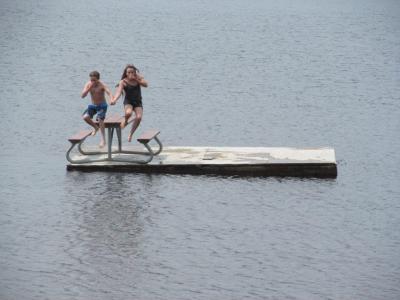 |
November 01, 2013
Photography Today in Perspective
|
Our heritage is those things that are passed down in
various ways that establish our roots and who we are. The development of
photography is one of the most important heritage components. The development of
film and cameras has added remarkable insight into history, genealogy and our
perspective on life in general. But film photography is on its last legs. There
are still a few places where you can get film processed and negatives printed
Robert Burley a professor at Ryerson University has spent
years looking at the demise of film and has produced a book on the subject along
with a major exhibition. In a Macleans article (Oct. 21) he says that “when
people flee their burning homes now they don’t have to worry about their
photos.” The photos are stored in the cloud or among 220 billion images on
Facebook, the world’s largest photo album.
Burley’s book The Disappearance of Darkness: Photography at
the End of the Analog Era looks at length at the Eastman Kodak film and camera
monolith based in
Rochester,
New York which employed 60,000 people but
eventually went bankrupt. Burley’s exhibition on the end of film photography
opened October 18 at the National Gallery in Ottawa. Another version of the
exhibition is on in France where early strides in photography took place. There
will be a later showing of the exhibition at the Ryerson Image Centre in
Toronto.
From a heritage perspective our world is seen in a
different way because of film photography because we were able see images frozen
in time where only paintings and words existed before. As the saying goes one
picture is worth a thousand words.Photographs are an important part of the
articles I have written in Community Voices. In early articles I usually used
existing photos but as time went by I started to use many of the digital photos
I took. With a couple of photos per article there are hundreds of photos
augmenting my words on line on Heritage Perspectives
Like many people, film has been an important part of my
life and my family’s life for as long as I can remember. My brother and I have
been committed genealogists for generations and have sought and used many
photographs. My wife and I with over 60 years of marriage and many offspring
have taken thousands of photos and we have many albums and boxes of photos and
negatives and many digital prints.
I have written about several photographers I have
respected. My maternal grandmother’s sister had a daughter Mary Spencer who was
a remarkable pioneer professional photographer in the early days of film. I
wrote about her and her photos used in the famous Bill Miner train robber
history and movie. A new book on Mary’s life was recently launched in
Kamloops and shows many of her photos. It is
called the True Story of Pioneer Photographer, Mary Spencer. (Google Kamploops
Museum for information). My article on Mary appeared in Community Voices on
December 8, 2006 – Google Heritage Perspectives and go to date indicated.
Another article reference of interest is “Hartley Trussler
Remembered on Powassan’s 100th” (June 30, 2005). Hartley’s photos and
writing are a remarkable record of a bygone era. I mounted an exhibition of his
photos at the Powassan Library’s Downstairs Gallery in Powassan’s Centennial
Year.
There are hundreds of digital movies these days including
many made locally. Check out VIEMO a video site that has some of the work by
North Bay’s Jim Calarco and Kevin Hoffman
including the award winning “Strangers”.
 |
My grandchildren swimming at the Hydro pond in Powassan. |
As I mentioned photographs have been important to me and I
should recognise my son Paul who designed and published all of my books and
used advanced photographic design in the process using film and digital prints
making the books much different than books in the past.
When talking about film I remember my oldest son Clarke who
began making 8mm films in his early teens in the 1950s, won awards and insisted
on becoming a film maker at age 16 and dropped out of high school. He has been
filmmaker ever since including 25 years as a professor of film studies at
Queen’s University. He is currently making a feature length documentary on our
family history in the 1960s. Check him out on Wikepedia and see how photography
can be a way of life.
My digital photo shows 2 of my grandchildren swimming at
the Hydro pond in Powassan this summer and shows how memories can be preserved.
Heritage Perspective Home Page
| 
![]() Past
Forward is now on Facebook "LIKE" us to keep in touch
Past
Forward is now on Facebook "LIKE" us to keep in touch